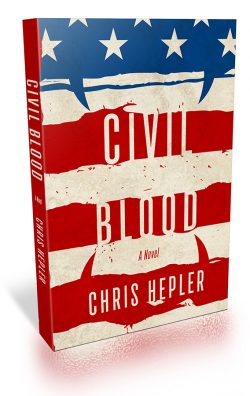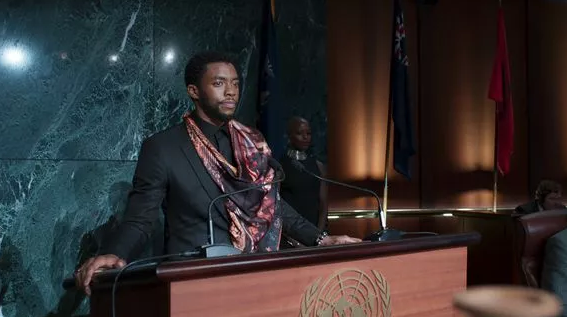Warning: long post.
My company is owned by a big Chinese conglomerate, so I was in Beijing recently on business. Seasun Games personnel are wonderful hosts, and they took us out to dinner each night. As you might expect, the food was spectacular and a fair bit of it was unusual to Westerners. At the risk of sounding like an Instagram post, the things I ate included:
* Lotus root
* Black carp
* Preserved plum
* Sweet corn soup served in a drink glass
* Borscht
* Stewed Milk
* Raspberry juice with chunks of dragonfruit
* Jellyfish
The jellyfish was my least favorite. I was basically dared to eat it, and besides having a mediocre taste, the cooking process dehydrated it so it was like rubbery jerky. But that wasn’t the real culture shock.
If you’ve been to Chinese restaurants in North America, you’ll be familiar with the displayed fish tanks full of live animals destined for the dinner table. It’s like a “Guaranteed Fresh” sticker, but it can’t be faked. In China, it’s even more blunt. One memorable restaurant had a steamer bowl built into the table. The waiter proceeded to dump live, squirming, gray shrimp into the bowl, legs wriggling and all. He turned on the heat, and we watched our dinner die.
The shrimp convulsed, trying to escape. They leapt a few inches inside the glass, but they had no chance, and soon they stopped moving entirely. After a few minutes, their gray carapaces turned the familiar pink of shrimp you see in the grocery store. And the Beijing team proceeded to eat them. I refrained, as did my co-writer Phil, who’s vegetarian.
I’m not vegetarian. And I don’t particularly like people who act superior because they are. This post is for people who eat meat, but wonder, “hey, what’s that all about?” Because it matters in ways you might not be aware of. And if you’re going to do it, you might as well do it with your eyes open.
As people go, I’m fairly used to the idea of watching animals die. I eat chicken, fish, and less frequently, pork and beef. I’ve got no illusions about where the food comes from. I’ve also owned pet snakes, which means I’ve bought live animals to be killed and consumed whole because that’s how carnivores roll. I don’t subscribe to the view that all life is sacred no matter the circumstances. While an admirable stance, it fails to take into account the killing of microscopic life our bodies do every day, and our cleaning products kill similar organisms in abundance, so we can live healthily.
Denis Leary had a comedy routine mocking the people who want to save cute animals, or at least the people who don’t think about it too hard. In the interest of keeping this page fun, I’ll post it here:
Jokes aside, I sympathized a bit with the trapped shrimp. Were my co-workers actually going to eat them all? Or would a portion of the shrimp have literally died for nothing? If you’re going to take something’s life, you might as well not waste it, right?
In the book “Plundering Paradise: The Struggle for the Environment in the Philippines,” the author chats with a rural Filipino fisherman and tells him the fish he’s catching are endangered. “Do you feel any guilt about killing them when they could be the last of their kind?” the author asked.
The fisherman’s response was, “If it’s a choice between saving a fish and feeding my kids for a day, I’m going to feed my kids.”
I tell people about that exchange at parties and such because it sums up a lot about the resistance to environmental initiatives the world over. It’s not greed or ignorance or “them” having the misfortune to be born somewhere that isn’t as perfect as where “we” live. It’s people being forced to decide between two outcomes that both suck.
If you’re shocked by the fisherman’s statement, I’d like to remind you that humans can shrug off an amazing amount of terrible outcomes. For thousands of years, humans tolerated the slave trade. We tolerate crime and homelessness today, turn a blind eye to wars that were largely held to be mistakes, and so on. As I see it, this breaks down into about five levels of probable reactions.
- If they don’t have to see it or think about it, they’ll tolerate an almost unlimited amount.
- If it’s not one of their own mental “group” suffering, but they’ll profit from it, they look to others for social cues and often do some mental gymnastics to justify it.
- If it’s not one of their own, and they have no stake in it, but it’s right in front of them, we’ll say it’s a 50-50 chance.
- If it’s one of their own, but they’ll profit from it, they may have an actual dilemma.
- If it’s one of their own mental “group”: they often speak up, if not act.
Heroic people, who are actively trying to make the world a better place, and amoral people, who deliberately don’t give a crap, are on the far ends of the spectrum in this generalization.
So how do I reconcile environmentalist views with the fact that meat tastes good and it’s one of the few ways I can get my kids to eat protein?
I shoot for not being as bad as many. As some religion said, “You aren’t required to save the world, but neither are you allowed to abandon the effort.”
So if I can decrease my impact, and use my 5 seconds of Internet fame to reach some people, and encourage them to decrease their impact, maybe I’ll leave the world in a better place than I found it. So I’m going to do that encouraging now.
I’m not encouraging you to go full-on vegetarian. It’s much better for the environment, but I’m aiming at easily achievable steps here. Easily Achievable Step 1 is to eat less beef and pork and substitute chicken instead. Why?
First reason: because it tastes just as good. You’re the opposite of that fisherman who was catching endangered fish. You have two options, and they both taste great.
Second reason: it’s convenient. Anywhere that serves beef will probably serve chicken breast, so you don’t have to change your choice of venue.
Third, chickens are not going extinct any time soon. Humans turn about 50 billion (with a B) chickens into food products every year. I don’t freak out about this because we’ve got industries that depend on a steady supply of chickens for their survival and are great at breeding new ones.
Fourth, chicken meat is much less ecologically damaging than beef. Here’s why:
- Chickens don’t need as much space as cows (i.e. less clear-cutting of forests to make farmland).
- They don’t need as much fresh water throughout their life cycle. Fresh water is not the most renewable resource in the world.
- Chickens don’t produce as much methane (see here but note the caveat about grass-fed beef not being as great as advertised here).
- This video, “Beans, Not Beef,” covers why beef production in Brazil and the U.S., its biggest market, is a major producer of climate-wrecking stuff.
- Switching from beef to chicken gets you most of the way without having to give up meat entirely.
- If you’re still a beef-lover, vat-grown meat is on its way in a few years. (You can invest in such companies now, but that’s a topic for another day.)
“Okay, wait,” you say. “You’re okay with the deaths of fifty billion chickens a year, but you’re up in arms about other species?”
Well, yeah. I don’t like other people closing off options for me.
Growing up, I was kind of annoyed reading textbooks and seeing dodos and passenger pigeons and the long list of other creatures that died due to human influence. (Did you know North America was full of megafauna before humans arrived? Lions? 4-ton sloths?)
Barring wonderful advances in cloning technology, those critters are gone for good. Not only will I never be able to see them, my kids won’t, and their kids won’t, and on and on forever, because some dumbass humans didn’t pay attention to how few were left. When someone says, “Hey, the Great Barrier Reef is dying off because the oceans are a giant carbon sink and the coral’s bleaching,” my response is, “I never planned on going there, but I’d still like the option!” And there’s no shortage of species that are endangered now.
I’m sure the more anti-environmentalist among you have seen Penn and Teller’s “Bullshit!” segment on environmentalism (around the 24 minute mark here). The “too long, didn’t read” version is that Penn and Teller asked NGO spokespeople how many species there are in the world, how many are going extinct and how fast. The spokespeople weren’t able to give good answers.
To which I say, “you know you can Google it, right?”
There’s somewhere between 1-2 million species that have been named, and about 16,000 that are declared endangered right now. A small fraction, you say? Sure, but only about 80,000 of them are vertebrates, the rest are bugs, bacteria, and things you’d never notice are a species anyway. 16,000 species is a lot of species. If you wanted to mount an annoying, week-long campaign at your office to save X species, you could find one to do for the rest of your natural life and still not save them all. Worse, some endangered ones are keystones.
What’s a keystone species? They’re the ones that take the rest of the ecosystem down with them if they go. Elephants are one. I don’t really like being near elephants at the zoo: I never found them all that neat, and they often smell like elephant poop. But elephants eat young trees and prevent certain bushes from encroaching on the savanna. That means the whole freaking savanna loses habitat when you start losing elephants, and they don’t reproduce very fast. In North America, the gray wolf is a big deal, because it keeps down the elk population, which otherwise eat way too many plants. Off the California coast, the local environmentalists want to (all together now) save the whales, another keystone. Note to Denis Leary: otters are a keystone too.
So if you’re an affluent American, you probably won’t have to watch your dinner die, like I did. But it did die. And if we all keep going the way we’re going, there are going to be a lot more extinctions. So have some chicken instead of a burger for a change. Try a veggie patty and see if you can stand it. I don’t want a world where “survival of the fittest” means we have nothing but rats and roaches and jellyfish.
Trust me, you don’t want to eat jellyfish more than once.




